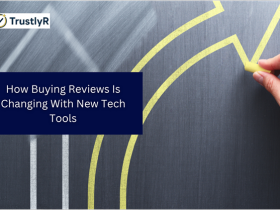Most organisations don’t fail because they lack data; they fail because their data isn’t wired into how strategy actually gets done. Dashboards grow, meetings multiply, and yet the business drifts. The real shift happens when analytics stops being a reporting function and becomes the engine that translates ambition into everyday choices. This article lays out a practical way to connect business analytics with long-term strategy execution—so that insights don’t simply inform, they propel.
Start With Strategic Questions, Not Tools
Strategy is a set of bets. Analytics should clarify the odds. Instead of opening with “What can we measure?”, begin with “Which choices will make or break the plan over the next 12–36 months?” Turn the strategy into a small set of decision-critical questions, such as:
- Which customer segments will deliver 70% of next year’s growth?
- What mix of pricing and product features maximises margin without harming retention?
- Which operational constraints will most limit scale in the next two quarters?
Only then, map the data, models, and experiments needed to answer these questions. This prevents teams from drowning in interesting but strategically irrelevant metrics.
Translate Strategy Into A Testable Measurement Model
Create a causal map that links inputs to outcomes: channels → behaviours → financial results. From this, derive a concise metric stack:
- North Star metric that best signals strategic progress.
- Leading indicators that move first (trial sign-ups, repeat usage, cycle time).
- Guardrail metrics to protect the downside (churn, NPS by segment, defect rates).
- Lagging outcomes such as revenue and margin.
Make the relationships explicit—if adoption rises by X%, what change should appear in retention within Y weeks? When those links are transparent, teams can spot when the strategy is working and when it needs correction.
Build Decision Pipelines, Not Just Dashboards
Static dashboards rarely drive action. Replace them with decision pipelines that start with a strategic question and end with a recommended next step. A good pipeline:
- Pulls the freshest data relevant to the question.
- Runs a small, reliable set of models (forecast, attribution, or propensity).
- Presents trade-offs and recommended actions with confidence intervals.
- Captures the decision made and the result, closing the loop for learning.
This structure creates a memory of decisions and outcomes, improving judgment over time and avoiding the common “we tried that judgment ” memory.

Embed Analytics In The Operating Rhythm
Long-term strategy execution needs a steady cadence. Establish a monthly strategy room where leaders review a one-page strategy scoreboard, agree on two or three decisive actions, and assign owners. In weekly forums, product and operations teams use leading indicators to steer experiments and delivery. The rhythm matters: if insights and actions don’t share the same calendar, the plan frays.
Treat Data Governance As Strategy Insurance
Many strategies stall because the underlying data is inconsistent, late, or ambiguous. A light but firm governance model protects the plan:
- Clear definitions for critical metrics (what exactly counts as an “active customer”?).
- Versioned data products with owners and SLAs.
- A short backlog for data fixes prioritised by impact on strategic decisions.
This is not bureaucracy; it’s insurance that the numbers leaders rely on are stable and comparable across time.
Invest In Capability And Fluency
Analytics only scales when business teams can read, question, and use it. Create fluency across roles: executives learn to interrogate uncertainty; analysts learn to frame outcomes and trade-offs; engineers learn product and commercial context. For organisations building regional capability, structured programmes—such as business analyst training in Bangalore—can help raise baseline skills quickly and consistently across distributed teams.
Link Incentives To Learning, Not Just Results
If bonuses hinge solely on lagging financials, people will avoid risk. Balance the scorecard with learning goals: number of validated experiments, speed from insight to release, and reductions in time-to-decision. Reward teams for disproving assumptions early; it’s cheaper than persisting with an elegant but wrong plan.
Measure Benefits Realisation, Not Just Project Delivery
Strategy execution is a portfolio game. Move beyond “project completed on time” and track benefits realised against the original hypothesis. For each initiative, maintain a living benefits ledger: expected impact, realised impact, learning captured, and whether to scale, modify, or stop. This quietly kills zombie projects and frees capacity for the few bets that genuinely move the needle.
Start Small: A 90-Day Playbook
You don’t need a massive transformation to begin. Over 90 days:
1. Weeks 1–2: Extract three make-or-break strategic questions. Draft the causal map and agree on metric definitions.
2. Weeks 3–6: Build one decision pipeline per question. Wire it into an existing weekly forum. Document decisions and outcomes.
3. Weeks 7–10: Run targeted experiments; refine the leading indicators and guardrails as evidence emerges.
4. Weeks 11–13: Review results in a strategy room; double down on one bet, halt one, and redesign one. Publish a short benefits report.
By the end of this cycle, you’ll have proof that analytics can accelerate execution—not by producing more charts, but by increasing the speed and quality of decisions.
The Pay-Off: Strategy That Learns
When analytics is coupled to strategy, the organisation becomes a learning system. Plans become testable hypotheses; meetings become moments of choice; and dashboards become instruments, not ornaments. The goal isn’t perfect prediction—it’s compounding advantage through faster, better, and braver decisions. For teams building capacity at scale, regional upskilling—such as business analyst training in Bangalore—can anchor consistent practices while keeping the strategic lens front and centre.
Long-term strategy execution is not about willpower; it’s about wiring the business so that insight and action are inseparable. Do that, and your strategy stops living in slides and starts living in the numbers that matter.











